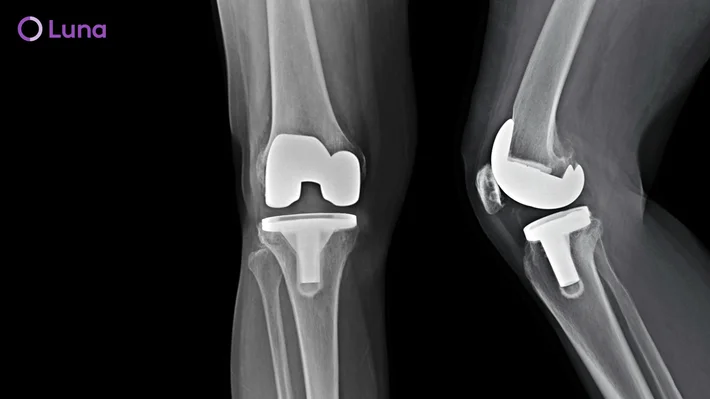![Separator]()
What is a total knee replacement?
Each year, more than 600,000 total knee replacement surgeries are performed in the United States alone. For many patients who experience daily knee pain due to arthritis or injury, a total knee replacement surgery is a safe and effective means of relieving pain, correcting leg deformities, and returning normal motion to the knee.
The knee is made up of the femur, the tibia, and the patella, which are all covered in cartilage and a thin lining called the synovial membrane. Damage to any one of these components can impede the knee’s normal functioning, causing reduced range of motion and frequent pain that can interfere with a patient’s daily life.
A total knee replacement surgery, also called a knee arthroplasty, involves replacing the surface of the bones with prosthetics to improve motion and prevent further wear and tear. Firstly, a surgeon will remove any damaged cartilage or bone, replacing them with metal components. Then, the kneecap is replaced with a plastic button, and a plastic spacer is inserted between the metal components to reduce friction.
Source:
OrthoInfo



















